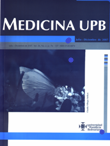Ketamina versus Fentanilo para sedación neonatal
Contenido principal del artículo
Resumen
Se presenta en este artículo una revisión sobre las ventajas que tiene la Ketamina frente al Fentanilo como agente sedante en población neonatal, discutiendo los principales cambios hemodinámicos, respiratorios y ocurrencia de efectos adversos atribuibles a cada uno de estos fármacos.
Referencias
Anand KJ. International Evidence-Based Group for Neonatal Pain. Consensus statement for the prevention and management of pain in the newborn. Arch Pediatr Adolesc Med 2001; 155:173-80.
Mace SE, Barata IA, Cravero JP, Dalsey WC, Godwin SA, Kennedy RM, Malley KC,Moss RL, Sacchetti AD, Warden CR, Wears RL; American College of Emergency Physicians. Clinical policy: evidence-based approach to pharmacologic agents used in pediatric sedation and analgesia in the emergency department. Ann Emerg Med 2004; 44:342-77.
Stevens B, Jhonston CC. Pain in infants Theoretical and conceptual issues Maternalchild. Nurs 2001; 101:62-65.
Henry RP, Haulbold k, Dobrzykowski MT. Pain in the Healthy Full Term Neonate Efficacy and safety of Intervention. NBIN 2004; 4 :106-113
Napoleon Burt N. Perioperative pain management in newborn [Internet]. South Carolina: Medical University of South Carolina; 2003. Shelley C Springer. [Fecha de consulta 10 de marzo de 2006]. Disponible en: www.emedicine.com/ped/topic2856.
Zemsky WT, Scheehter NL. What’s new in the management of pain in childrens. Current Clini Practi. 200;18:327-48.
Carvajal R. Pain in neonates: pharmacological treatment. Arch Pediatr 2006;13:211-24.
Simons SH, van Dijk M, van Lingen RA, Roofthooft D, Duivenvoorden HJ, Jongeneel N, et al. Routine Morphine Infusion in Preterm Newborn who Received Ventilatory Support. JAMA 2003;290:2419-27.
Van Linger RA, Simons SH, Anderson Bj, Tibbael P. The effect of analgesia in the vulnerable infant during the perinatal period. Clinic Perinatol 2002; 29:511-34.
Korrala B, Pandey RK, Saksen AK, Kumar R, Sharma S. A comparative evaluation of newer sedatives in conscious sedation. J Clin Pedaitric Dent 2006;30:273-6.
Badina L, Norvedo S, Barbi E. Procedural sedation and analgesia in children. Lancet 2006; 367:1900-1.
Lowriel, Wess AH, locombe C. The pediatric sedation unit: a mechanism for pediatric sedation. Pediatrics 1998; 102: e30.
Tibbael D, Anand KJS, Vanden Anker JN. The farmacological treatment of neonatal pain. Seminars in fetal and neonatal Medicine. 2005;10:195-205.
Cotsen MR, Donaldson JS, Vejima T, Morello FB. Efficacy of Ketaine hydrochloride sedation in chindren for interventional radiologic procedures. AJR Am J Roentgenol. 1998; 171; 265-266.
Berkenbosch JW, Graff GR, Stark JM. Safety and Effective of Ketamine sedation for infant flexible fiberoptic bronchoscopy. Chest Mar 2004; 125:1132-7.
Duhn LJ, Medves JM. A systematic Integrative Review of Infant Pain Assessment tools. Adv Neonatal Care 2004; 4(3) :126-40.
Richardson DK, et al. Neonatal Acute Physiology: A Pysiologic Severity index for Neonatal Intensive Care. Pediatrics 1993;91:617-23
Corrssen G, Reves JG, Stanley TH. Intravenous Anesthesia and Analgesia. Philadelphia: Lea & Febirger; 1988.
Morgan Miller. Anestesiología Clínica. 3. Ed. New York: McGraw Hill; 2002.
Himmelseher S, Duriex ME. Ketamine for Perioperative Pain Management. Anesthesiology. 2005;102:211-20.
Castilla M, Jerez M, Llacer M, Martinez S. Anesthetic management in a neonate with congenital complete heart block. Paediatr Anaesth 2004;14:172-5.
Pees C, Haas NA, Ewert P, Berger F, Lange PE. Comparison of analgesic/sedative effect of racemic Ketamine and S (+)-Ketamine during cardiac catheterization in newborns and children. Crit Care Med 2002; 30:1231- 6.
Green SM, Denmark TK, Cline J, Roghair C, Abd Allah S, Rothrock SG. Ketamine sedation for pediatric critical care procedures. Pediatric Emerg Care 2001; 17:247-8.
Singh A. Girotra S, Mehta Y, Radhakrishnan S, Shrivastava S. Total intravenous anesthesia with Ketamine for Pediatric interventional cardiac procedures. J Cardiothorac Vasc Anesth 2000; 14:36-9.
Mickley GA, Kenmuir CL, McMullen CA, Znyder A, Yacom AM. Long term age depedent behavior changes following a single episode of fetal N-methyl- DAspartato (NMDA) receptor blockade. BMC Pharmacol 2004; 4 : 28.
Hoffmann VL, Vermeyen KM, Adriaensen HF, Meert TF. Effects of NMDA receptor antagonist on opiod-induced respiratory depression and acute antinoception in rats. Pharmacol Brochem Behav 2003; 74:933- 41.
Taletomo CK, Hodding J, Kraus DM. Pediatric Dosage Handbook. 9. ed. Canada: Lexi-Comp; 2002.
Jobeir A, Gala MO, Bulbul ZR, Solymar L, Darwish A, Schmaltz AA. Use of low dose Ketamine and/or Midazolam for Pediatric cardiac catherization. Pediatr Cardiol, 2003;24:236-43. 29.
Hartvig P, Larsson E, Joachimsson PO. Postoperative analgesia and sedation following pediatric cardiac surgery using a constant infusion of Ketamine. Cardiothorac Vasc Anesth 1993;7:148-53.
Luscri N, Tobias JD. Monitored anesthesia care with a combination of Ketamine and dexmedetomidine during magnetic resonance imaging in three children with trisomy 21 and obstructive sleep apnea. Paediatr Anaesth. 2006; 16 (7):782-6.
Yaubhi N, Oberol GS. Anesthetic for repair of neonatal diaphragmatic hernia and eventration role of Ketamine Infusion. PNG Med Journal 1991;34:69-74.
Golden S. Combination profonol-Ketamine anesthesia in sick neonates. Paediatr Anaesth 2001,11:119-22.
Saarenmaa E, Neuvonen PJ, Huttunen O, Fellman V. Ketamine for procedural pain relief in newborn infants. Arch Dis Child Fetal Neonatal 2001; 85:F53-6.
Karapinor B, Yilmaz D, Demiraq K, Kantar M. Sedation with intravenous Ketamine and midazolam for painful procedures in children. Pediatri Int 2006;48:146-51.
Franck LS, Naughton I, Winter I. Opiod and benzodiazepine withdrawl symptoms in pediatric intensive care patients. Intensive Crit Care Nurs 2004; 20:344-51.
Mace SE, Barata IA, Cravero JP, Dalsey WC, Godwin SA, Kennedy RM, Malley KC, Moss RL, Sacchetti AD, Warden CR, Wears RL. Clinical Policy Evidence-Based Approach to Pharmacologic Agents Used in Pediatric Sedation and Analgesia in the Emergency Department. Annl Emerg Med 2004; 44:342-77.
Hattis D, Russ A, Ginsberg G, Banati P, Kozlak M, Rob G. New born, older children and adults Comparison of Pharmacokinetics and Pharmacokinetics Variability. [Internet]. Massachussetts: Clark University; 2003. [Fecha de acceso 10 de marzo de 2005]. Disponible en: http://www2.clarku.edu/ faculty/dhattis/slide.doc


